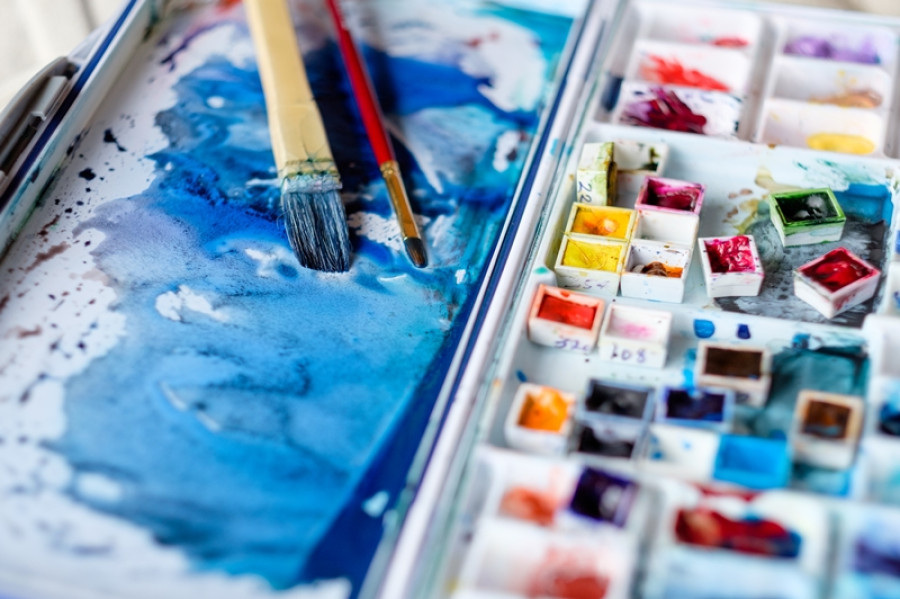Arts
How art can help with mental wellbeing during a crisis
Many suppose that art’s impact on overall health and happiness is simply aesthetic, but its therapeutic benefits are much deeper, say psychologists.
Ankit Khadgi
Asmika Guragain has always found painting therapeutic. The process of playing with colours, moving her hands along with her thoughts, and delving deep into her imagination makes her happy, she says.
As much as Guragain loved painting though, she seldom had enough time to paint, she says. But with the lockdown now giving her ample time, Guragain has started channeling her feelings through art again. “I always wanted to get back to it, and I now have,” says Guragain.
Creating things, especially in the face of uncertainty and fear, is an innate drive in human beings, say, psychologists, a coping mechanism to distract and ease the mind. Social media feeds are currently overwhelmed with people posting their creative adventures—whether it be cooking, baking, dancing, playing instruments, or writing. And it is not surprising that, with the Covid-19 crisis unfolding, people have turned to art, using it as a therapeutic tool to settle unsettling emotions.
“The best way to take care of our mental health is to move our muscles, especially our brain,” says Bharat Gautam, a clinical psychologist. “When we paint, we use our mind as well as our hands regularly. The synergy created due to the combination of creativity as well as physical activeness while painting helps people become more mindful; it helps clear your mind, making you feel fresher, more jovial.”
According to Gautam, painting is one of the most effective means to keep the mind busy, as it encompasses both creativity and productivity. “When you paint you get a sense of personal achievement. While other forms of creative avenues, like listening to music, reading books or watching movies are helpful too in coping with uncertain times, they are viewed more as forms of distractions. Painting, on the other hand, helps people express themselves making the experience more fulfilling,” he says.
Numerous studies have shown that art therapy is an effective medium to address mental health issues, like depression, anxiety and trauma. Similarly, many studies have also indicated that art has the power to make people focus on the positive things in life, relieving their stress, which can have a profound impact on their mental as well as physical health.
But using art for therapeutic purposes and art therapy as an experience are two completely different things, according to Lajja Dixit, Nepal’s first and only professional art therapist. “While art-making sessions, where art is used as therapy, can help people divert their mind, their positive effect can be short term,” says Dixit. “In art therapy sessions, however, art is used more as a tool to help people communicate their innermost feelings that are hidden deep in their unconscious for long term or even permanent relief. This process can be a great tool to fight depression and anxiety,” says Dixit, who has her private practice and also works part-time at the psychiatric ward of Nepal Medical Hospital Teaching Hospital.
And although the healing power of art has not been extensively used nor given much preference in the arena of psychotherapy and counseling in Nepal, mental health practitioners say art is a powerful medium of helping people deal with negative emotions. “Not every person can express their feelings in words, especially when they are traumatised,” says Dixit. “But by using tools of art therapy, we can help people unknot their confusion. This process can make them feel more comfortable and positive about themselves as well as the environment they are in.”
Just dipping fingers on paint and painting on a canvas or even doodling can be therapeutic and provide relief in stressful times such as now. “I feel productive when I spend my time drawing something,” says Anugya Raymajhi, a 24-year-old student who keeps herself busy with calligraphy and art journaling. “It feels like I have accomplished something by engaging myself in learning and drawing art, making my creativity flow, and also relieving my stress.”
That’s what just sitting down to paint can do to people,” says Gautam. “This is a stressful time and mental health issues will come up for people. But if we increase practises of mindfulness, achievements, and compassion, we can develop a strong natural mechanism and the capacity to withstand this current stress we are all facing, then we can cope up with our problems.”




 30.12°C Kathmandu
30.12°C Kathmandu












